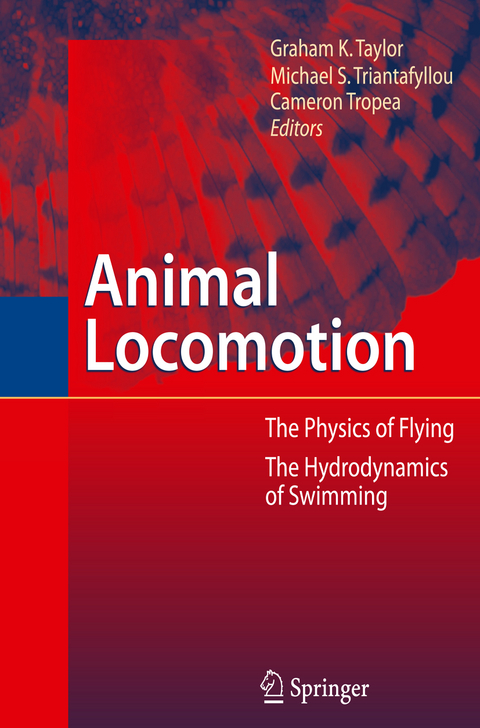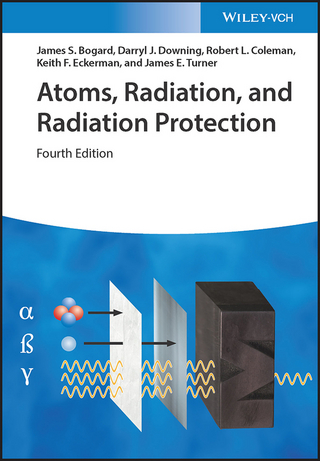Animal Locomotion
Springer Berlin (Verlag)
978-3-642-11632-2 (ISBN)
Cameron Tropea, geb. 1954, ist derzeit Leiter des Fachgebietes Strömungslehre und Aerodynamik im Fachbereich Maschinenbau an der Technischen Universität Darmstadt, wo er sich vor allem mit Forschung im Bereich der Fluidzerstäubung, der Aerodynamik und der Strömungsmesstechnik befasst. Seine Beschäftigung mit der Bionik umfasst die Aerodynamik des Vogelfluges sowie das Aufprallverhalten von Flüssigkeitstropfen auf strukturierten Oberflächen.
The Hydrodynamics of Swimming.- Swimming hydrodynamics: ten questions and the technical approaches needed to resolve them.- A potential-flow, deformable-body model for fluid-structure interactions with compact vorticity: application to animal swimming measurements.- Wake visualization of a heaving and pitching foil in a soap film.- A harmonic model of hydrodynamic forces produced by a flapping fin.- Flowfield measurements in the wake of a robotic lamprey.- Impulse generated during unsteady maneuvering of swimming fish.- Do trout swim better than eels? Challenges for estimating performance based on the wake of self-propelled bodies.- Time resolved measurements of the flow generated by suction feeding fish.- Powered control mechanisms contributing to dynamically stable swimming in porcupine puffers (Teleostei: Diodon holocanthus).- Fluid dynamics of self-propelled microorganisms, from individuals to concentrated populations.- Swimming by microscopic organisms in ambient water flow.- Water-walking devices.- Flapping flexible fish.- Vortex dynamics in the wake of a mechanical fish.- Investigation of flow mechanism of a robotic fish swimming by using flow visualization synchronized with hydrodynamic force measurement.- The Physics of Flying.- PIV-based investigations of animal flight.- Wing-wake interaction reduces power consumption in insect tandem wings.- Experimental investigation of some aspects of insect-like flapping flight aerodynamics for application to micro air vehicles.- Design and development considerations for biologically inspired flapping-wing micro air vehicles.- Smoke visualization of free-flying bumblebees indicates independent leading-edge vortices on each wing pair.- The influence of airfoil kinematics on the formation of leading-edge vortices inbio-inspired flight.- Wake patterns of the wings and tail of hovering hummingbirds.- Characterization of vortical structures and loads based on time-resolved PIV for asymmetric hovering flapping flight.- Unsteady fluid-structure interactions of membrane airfoils at low Reynolds numbers.- Aerodynamic and functional consequences of wing compliance.- Shallow and deep dynamic stall for flapping low Reynolds number airfoils.- High-fidelity simulations of moving and flexible airfoils at low Reynolds numbers.- High-speed stereo DPIV measurement of wakes of two bat species flying freely in a wind tunnel.- Time-resolved wake structure and kinematics of bat flight.- Experimental investigation of a flapping wing model.- Aerodynamics of intermittent bounds in flying birds.- Experimental analysis of the flow field over a novel owl based airfoil.- The aerodynamic forces and pressure distribution of a revolving pigeon wing.
From the reviews:
"This book is a collection of biomechanics locomotion papers, broadly grouped into 'those that swim', and 'those that fly'. ... Engineering-based research is strongly threaded throughout the book. ... The variety of research being carried out in this sub-section of biomechanics is fairly represented and for those wishing to find out some of the recent advances in the field, this is an excellent starting point." (Anna Carruthers, Aeronautical Journal, June, 2011)| Erscheint lt. Verlag | 17.5.2010 |
|---|---|
| Zusatzinfo | IX, 443 p. |
| Verlagsort | Berlin |
| Sprache | englisch |
| Maße | 210 x 279 mm |
| Gewicht | 1200 g |
| Themenwelt | Naturwissenschaften ► Physik / Astronomie ► Angewandte Physik |
| Naturwissenschaften ► Physik / Astronomie ► Mechanik | |
| Naturwissenschaften ► Physik / Astronomie ► Strömungsmechanik | |
| Technik ► Maschinenbau | |
| Schlagworte | Development • Dynamics • fish • fluid- and aerodynamics • Fluid Dynamics • Hardcover, Softcover / Physik, Astronomie/Mechanik, Akustik • Pitch • Vortices |
| ISBN-10 | 3-642-11632-9 / 3642116329 |
| ISBN-13 | 978-3-642-11632-2 / 9783642116322 |
| Zustand | Neuware |
| Haben Sie eine Frage zum Produkt? |
aus dem Bereich




